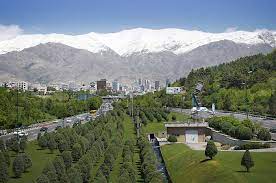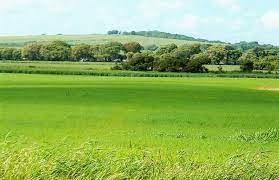Green belt is established as a large band of permanently protected countryside to serve both as a limit to unsustainable urban sprawl and as a means of preventing the further loss of valuable agricultural lands and other natural features.
By providing this protection, the Green belt has the potential to act as a long-term safeguard for the valuable stock of natural capital within the Greenbelt, whose ecosystems offer a broad set of benefits including the provision of clean drinking water, improved air quality, and vital natural habitat.
One of the important ecosystem functions of the Greenbelt is its potential to reduce greenhouse gases. The Green belt’s forests, wetlands, and agricultural soils capture and store considerable amounts of carbon and, as such, can play a role in mitigating climate change.
Meaning and Definition of Green belt
There are various perspectives to the definition of green belt:
A green belt refers to a physical area of open space, e.g., farmland, forest or other green space, that surrounds a city or metropolitan area, and it is intended to be a permanent barrier to urban expansion.
A green belt is a land use zone designation used in land use planning to retain areas of largely undeveloped, wild, or agricultural land surrounding or neighboring urban areas.
Similar concepts are greenways or green wedges which have a linear character and may run through an urban area instead of around it.
A green belt refers to vegetation cover leading to conservation of biodiversity, retention of soil moisture, recharge of ground water and maintaining pleasant micro climate of the region and control environmental pollutants.
Green belts are planned open spaces safeguarded from developmental activities such as construction of buildings and factories etc.
Safe guarded in the sense that no infrastructural development will be allowed on such designated areas and these areas will only be used for growing vegetation cover on it.
Green belts in and around urban and industrial areas are important to the ecological health of any given region.
A Green belt is defined as a strip of natural or artificially created coastal vegetation designed to prevent coastal erosion, and mitigate the adverse impacts of natural coastal hazards on human lives and property.
A green belt is also referred to as shelter belts which is a linear arrays of trees and shrubs planted to create a range of benefits and is been managed to alter environmental conditions in agricultural situations.
Shelterbelts are called by different names such as windbreaks, hedgerows, fence rows etc. They protect crop fields by reducing wind erosion, improving crop water use and increasing crop yields and economic returns
The objective of Green belt varies from country to country and region to region. The common objectives are to protect natural environments such as biodiversity, improve air quality of the region, pollution control, to maintain micro climate of the region, combat desert encroachment etc.
Read Also : Proper Methods of Disposal of Dilute Pesticide Waste
Green Belt Development is an important tool that aims at overall improvement in the environmental conditions of the region.

Importance of Green Belt
The following are some of the benefits offered by green belt projects:
Providing access for informal recreation
With the increasing intensification of urban areas and the loss of open space, including playing fields, the Green Belt can play a very significant role in providing space for informal recreation activities, such as cycling, walking and picnicking.
Providing opportunities for outdoor sport and recreation
As with informal recreation, the Green Belt offers significant opportunities for formal sport and recreation.
Conserving and enhancing landscapes
Successful tree planting increases woodland thereby reducing erosional activities of wind and water on the landscape. In addition trees provide food, shade, wood-energy, building and fencing materials.
They regulate micro-climates and rainfall patterns, hold soil to the ground, serve as habitats for other life forms and help to harvest and retain rainwater.
Preventing deforestation and increasing tree cover have a significant role to play in mitigation of global climate and improvement then livelihoods of local communities.
Improving damaged and derelict land
Securing improvement to damaged and derelict land through reclamation and greening projects are good environmental initiatives.
Contributing to urban renaissance
Active planning and management of open space can help to shape new development, create a strong urban edge, and provide a sense of place.
Enhancing peoples’ understanding of place
Green Belt creates opportunities to improve people understanding of place as it provide potential for outdoor recreation.
Providing an education resource
With its great diversity, the Green Belt provides an invaluable educational resource. There is potential for organized events and school visits as well as individual exploration.
Helping to improve public health
There are tangible health benefits to be gained from exercising and relaxing in a natural open space. The benefits are particularly significant for elderly people, children and people with mental and social problems.
Responding to climate change
Green Belt offers the potential to contribute to limiting the effects of climate change, for example through vegetated areas acting as carbon sinks and through opportunities for accommodating renewable energy resources such as biomass energy crops.
Where climate change is likely to exacerbate problems of water supply the Green Belt could provide space for water storage
Avenue for holidays and tourism
Open green spaces are potentially attractive to tourists and visitors as holiday destinations.

